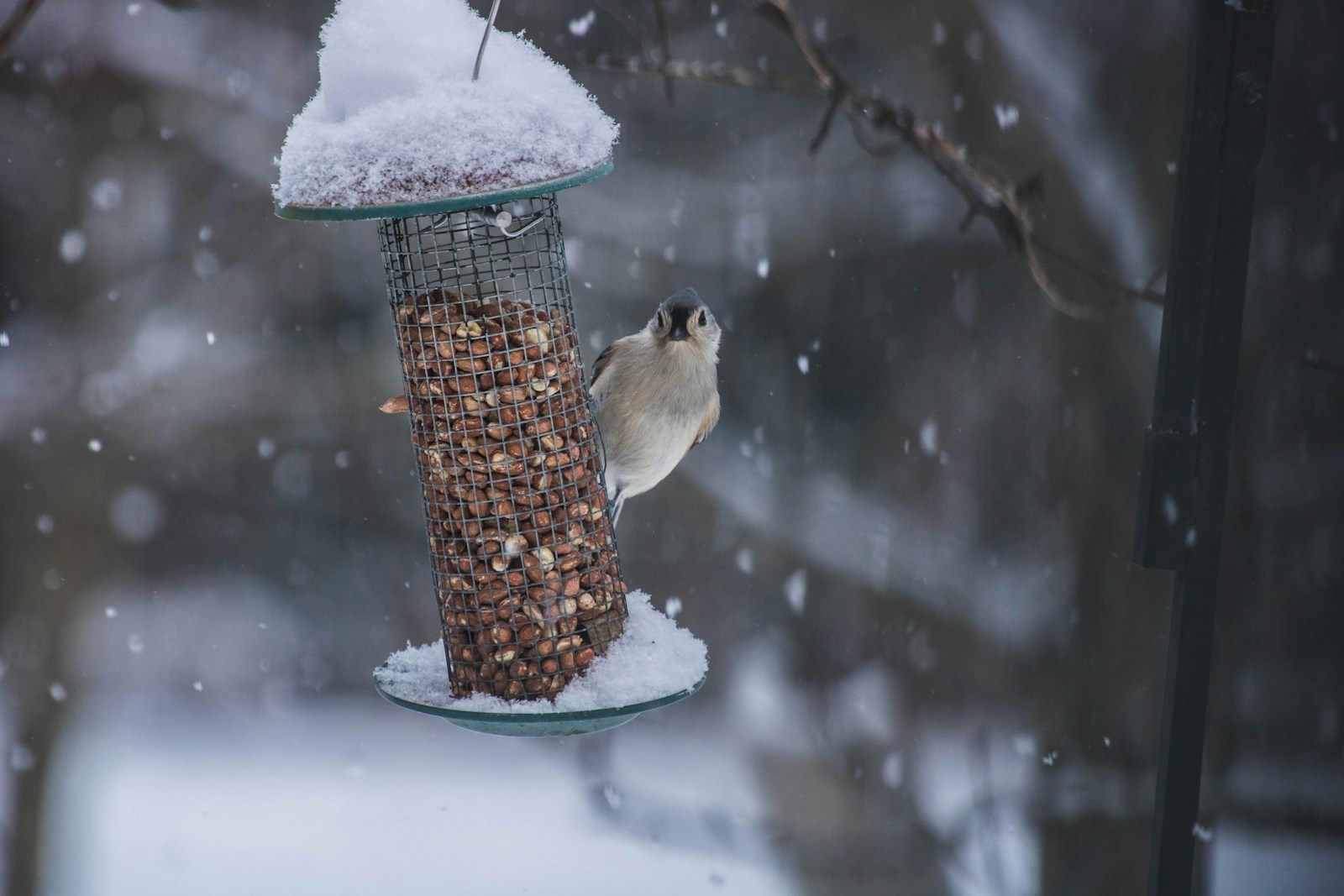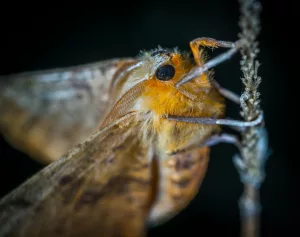If you enjoy watching birds or simply want to give back to nature, building a DIY bird feeder is a rewarding project. Not only does it help attract a variety of birds to your yard, but it also provides a valuable food source for birds, especially during the colder months when food is scarce. Whether you’re a seasoned crafter or new to DIY projects, making your own bird feeder can be a fun and creative way to interact with nature.
In this comprehensive guide, we will explore several DIY bird feeder designs, using various materials from upcycled items to natural resources. These feeders will cater to different types of birds and environments, ensuring that your yard becomes a welcoming space for local wildlife. Let’s dive into the step-by-step process of building DIY bird feeders and explore tips to enhance their effectiveness and sustainability.
1. Why Build a DIY Bird Feeder?
Before we get into the different types of bird feeders, it’s important to understand the benefits of creating one yourself. By building a DIY bird feeder, you can:
- Encourage biodiversity: Bird feeders attract different species of birds, promoting biodiversity in your yard or garden.
- Provide food: During winter or in urban areas, natural food sources for birds can be limited. A bird feeder helps sustain birds during these tough times.
- Upcycle materials: Many bird feeder designs use materials you might already have around the house, reducing waste and making this project eco-friendly.
- Enjoy birdwatching: Bird feeders offer you the chance to observe birds up close, learn about different species, and relax while watching wildlife.
- Teach kids about nature: Building a bird feeder is a great way to get kids involved in a fun, educational activity about birds and the environment.
Now that we understand the reasons for building a bird feeder, let’s explore some different designs.
2. Simple Milk Carton Bird Feeder
One of the easiest and most eco-friendly bird feeders you can make is from an empty milk carton. This feeder is perfect for beginners and great for those who want to involve children in the project.
Materials:
- An empty milk carton (cleaned and dried)
- Scissors or a craft knife
- String or twine
- Wooden dowel (optional)
- Non-toxic paint or markers (optional for decorating)
- Birdseed
Instructions:
- Clean the carton: Ensure the milk carton is thoroughly cleaned and dried before starting.
- Cut out the windows: Using scissors or a craft knife, cut two large windows on opposite sides of the carton, leaving about an inch of material at the bottom to hold the birdseed.
- Add a perch: Optional but useful for small birds. Poke a small hole below one of the windows and insert a wooden dowel or small stick for the birds to perch on while feeding.
- Decorate: If you like, you can paint or decorate the feeder with non-toxic paint or markers. Be sure to allow the paint to dry before moving on.
- Attach the string: Poke a hole through the top of the milk carton and thread a piece of string or twine through it. Tie a knot to secure the string, which will be used to hang the feeder.
- Fill with birdseed: Pour birdseed into the bottom of the carton, making sure it’s filled just below the windows.
- Hang the feeder: Find a sturdy branch or a hook in your yard, and hang the feeder from the string.
This simple feeder can be made quickly and will attract small birds such as sparrows, finches, and wrens.
Tips:
- Make sure to refill the bird feeder regularly, especially during the winter.
- Clean the feeder every couple of weeks to prevent mold or bacteria from building up.
3. DIY Mason Jar Bird Feeder
A mason jar bird feeder is a stylish and functional way to feed birds while adding a rustic charm to your yard. This feeder design is simple to make and works well for both small and larger bird species.
Materials:
- A mason jar (any size, with or without a lid)
- Wooden dowel or spoon (for the perch)
- Strong twine or wire
- Hot glue gun
- Birdseed
Instructions:
- Prepare the mason jar: Clean the jar thoroughly and remove any labels.
- Create the perch: If you have a lid, drill a hole through the center to fit a wooden dowel or spoon. If you’re not using a lid, glue the dowel directly to the jar. Make sure the perch is stable, as this is where birds will rest while feeding.
- Attach the twine or wire: Tie a strong piece of twine or wire around the neck of the mason jar to create a hanger. Make sure it’s long enough to hang the feeder securely from a branch or hook.
- Fill with birdseed: Fill the jar with birdseed, leaving a little space at the top.
- Hang the feeder: Once the feeder is assembled, find a tree branch or hook to hang it securely.
Tips:
- Place this feeder in a location that’s sheltered from the wind to prevent birdseed from spilling.
- Keep the mason jar clean by washing it regularly, as moisture can accumulate and spoil the birdseed.
4. Log or Branch Bird Feeder
For those who want a more natural look, creating a log or branch bird feeder is a perfect option. Using natural wood creates an aesthetic that blends well with your garden or yard and is also a great way to upcycle fallen branches.
Materials:
- A sturdy log or thick branch (about 12-18 inches long)
- A drill with a large drill bit (about 1-2 inches in diameter)
- Rope or wire for hanging
- Birdseed
- Peanut butter or suet (optional for coating)
Instructions:
- Prepare the log: Find a log or thick branch that is sturdy and long enough to hold birdseed. Make sure it is dry and free of any mold or rot.
- Drill holes: Using a large drill bit, create several holes along the length of the log. These holes should be about 1-2 inches deep, where you will place the birdseed.
- Optional: Add peanut butter or suet: For added nutrition, you can coat the inside of the holes with peanut butter or suet before adding birdseed. This will help attract more birds and provide a nutritious meal, especially in colder months.
- Add birdseed: Fill the drilled holes with birdseed.
- Attach rope or wire: Tie a strong piece of rope or wire around one end of the log to create a hanger.
- Hang the feeder: Find a tree branch or hook to hang your log feeder in a spot where birds can easily access it.
Tips:
- This feeder is ideal for attracting woodpeckers, nuthatches, and other birds that are used to feeding from trees.
- Place the feeder in a location that’s easy for birds to perch on while feeding, such as near other branches or trees.
5. Pinecone Bird Feeder
A pinecone bird feeder is one of the easiest and most kid-friendly bird feeders to make. This DIY project is perfect for getting children involved in birdwatching and nature activities. Pinecones naturally hold birdseed and can be coated with peanut butter or suet to make an irresistible treat for birds.
Materials:
- Large pinecones
- Peanut butter or suet
- Birdseed
- String or twine
Instructions:
- Prepare the pinecones: Choose large, open pinecones that will hold birdseed. Tie a string or twine around the top of the pinecone to create a hanger.
- Coat with peanut butter: Using a butter knife or spoon, spread peanut butter (or suet) all over the pinecone, making sure to get it into all the crevices.
- Roll in birdseed: Roll the peanut butter-coated pinecone in birdseed, pressing gently to ensure the seeds stick.
- Hang the feeder: Find a suitable branch or hook in your yard, and hang the pinecone by the string.
Tips:
- If you’re worried about squirrels, try using squirrel-proof birdseed or hanging the feeder out of their reach.
- Replace the pinecone once the birdseed is eaten or the feeder becomes worn.
6. Plastic Bottle Bird Feeder
A plastic bottle bird feeder is another easy and eco-friendly project that upcycles everyday materials. This design is perfect for attracting small to medium-sized birds and is durable enough to withstand various weather conditions.
Materials:
- An empty plastic bottle (any size)
- Wooden spoons or small dowels (for the perches)
- Birdseed
- Scissors or craft knife
- String or wire
Instructions:
- Prepare the bottle: Clean the plastic bottle thoroughly and remove any labels.
- Cut holes for perches: Using scissors or a craft knife, cut two small holes on opposite sides near the bottom of the bottle. Insert a wooden spoon or dowel through the holes to create a perch for the birds.
- Cut feeding holes: Cut small holes just above each perch where the birdseed can spill out. Be sure the holes are large enough for the birds to access the food but not too large that the seed falls out too easily.
- Attach string or wire: Poke a hole through the bottle cap and thread a piece of string or wire through it to create a hanger.
- Fill with birdseed: Pour birdseed into the bottle, ensuring it fills the feeder up to the feeding holes.
- Hang the feeder: Find a sturdy branch or hook and hang your plastic bottle bird feeder.
Tips:
- Choose a location that’s accessible to birds but out of reach for predators like cats.
- Replace the bottle when it starts to wear or crack from weather exposure.
7. Coconut Shell Bird Feeder
For a more tropical-inspired feeder, you can use a coconut shell to create a beautiful and natural bird feeder. This project is environmentally friendly and provides a sturdy container for birdseed or suet.
Materials:
- A coconut (cut in half and cleaned out)
- Drill
- String or twine
- Birdseed or suet
Instructions:
- Prepare the coconut shell: Cut the coconut in half and clean out the meat inside, leaving the shell intact. Make sure the shell is dry before proceeding.
- Drill holes for hanging: Using a drill, create three small holes evenly spaced around the top of the coconut shell.
- Attach the string: Cut three pieces of string or twine and thread them through the holes, tying them securely. Gather the strings together at the top to form a hanger.
- Fill with birdseed or suet: Fill the coconut shell with birdseed, or for a more nutritious option, fill it with suet during the winter months.
- Hang the feeder: Hang your coconut shell feeder from a tree or hook in your yard.
Tips:
- A coconut shell feeder is ideal for small birds like chickadees, finches, and wrens.
- Replace the birdseed regularly to keep it fresh, especially if it’s exposed to moisture.
8. Plate or Saucer Bird Feeder
If you’re looking for a simple, minimalist design, a plate or saucer bird feeder is an easy project that requires minimal materials. This feeder provides an open feeding platform that birds can land on and peck at seeds freely.
Materials:
- A small plate or saucer
- Strong glue or adhesive
- String or wire
Instructions:
- Prepare the plate: Choose a small plate or saucer that can easily hold birdseed.
- Attach the string: Glue the ends of four equal lengths of string or wire to the edges of the plate, creating a hanger.
- Fill with birdseed: Place birdseed directly on the plate or saucer.
- Hang the feeder: Use the strings or wire to hang the feeder from a tree branch or hook.
Tips:
- This open-style feeder is ideal for birds that enjoy platform feeding, such as cardinals, jays, and doves.
- Make sure to choose a sturdy plate that can withstand the elements.
9. Upside-Down Suet Feeder
An upside-down suet feeder is designed to deter nuisance birds like starlings while allowing smaller birds, such as woodpeckers and nuthatches, to feed comfortably. This feeder design positions the suet underneath a platform, making it accessible only to birds that can hang upside down while eating.
Materials:
- A small wooden board or tray
- Mesh wire or plastic mesh (to hold the suet)
- Drill
- Screws
- Suet cakes
Instructions:
- Prepare the board: Cut a small piece of wood to serve as the platform for your feeder.
- Attach the mesh: Secure the mesh wire or plastic mesh to the underside of the wooden platform using screws. This mesh will hold the suet cake in place.
- Drill holes for hanging: Drill holes in each corner of the wooden platform and thread wire or string through the holes to create a hanger.
- Insert the suet: Place a suet cake inside the mesh holder and ensure it’s secure.
- Hang the feeder: Hang the feeder upside down from a tree branch or hook, allowing birds to access the suet from below.
Tips:
- This feeder is great for attracting woodpeckers, chickadees, and nuthatches, who are comfortable feeding upside down.
- Make sure the suet is securely held in the mesh to prevent it from falling out.
10. Repurposed Teacup Bird Feeder
For a charming and whimsical bird feeder, you can use an old teacup and saucer. This DIY project is easy to make and adds a decorative touch to your garden or yard.
Materials:
- A teacup and saucer
- Strong glue or epoxy
- String or twine
- Birdseed
Instructions:
- Glue the teacup to the saucer: Use strong glue or epoxy to securely attach the teacup to the saucer. Allow it to dry completely.
- Attach the string: Glue or tie string or twine around the handle of the teacup, creating a hanger.
- Fill with birdseed: Fill the teacup with birdseed, and let it overflow onto the saucer for easier access by birds.
- Hang the feeder: Find a suitable location to hang your teacup bird feeder, such as a tree branch or garden hook.
Tips:
- This feeder is perfect for attracting small birds like finches and sparrows.
- Make sure the teacup is securely attached to the saucer to prevent it from breaking or falling.
Building a DIY bird feeder is not only a creative and fun project, but it’s also a meaningful way to support wildlife and bring the beauty of nature closer to your home. From simple designs like pinecone feeders to more elaborate feeders made from logs, mason jars, or coconut shells, there are countless ways to craft a bird feeder using materials you likely already have.
Remember, the key to a successful bird feeder is to ensure it’s placed in a safe, accessible location and that you maintain it regularly by refilling birdseed and cleaning it to prevent mold or disease. By creating and caring for your DIY bird feeder, you’ll be providing local birds with a reliable source of food and an inviting environment, while also enjoying the peaceful and satisfying activity of birdwatching.
So, gather your materials, choose a design that works for you, and start building a DIY bird feeder that will delight both you and the birds that visit your yard!




